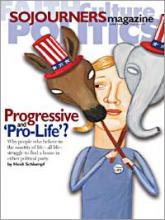Its happening all over America. If youre within 50 miles of a big city, youve seen it too. One year a field is planted in corn, and the next year it sprouts a subdivision. And the year after that, in the pastureland across the road, Target and Home Depot pop up like mushrooms among the cow pies. Within five or 10 years, an agricultural community has been buried beneath an avalanche of asphalt and exurbanites. Prime farmland has gone out of production. Oxygen-pumping forests have been cut. And the number of miles (and idling-in-traffic hours) put on all those SUVs has started multiplying.
We call it sprawl. I first saw it in the late 1980s driving from Washington, D.C., to Frederick, Maryland, to visit my in-laws. At first, Frederick was a quiet old town at the edge of the mountains. Then Interstate 270 began pushing toward it from suburban Montgomery County. Soon the highway was lined with glass office buildings, surrounded by rows of quickly constructed mock-Tudors and Cape Cods. Eventually, the blob reached the town of Frederick, and within a few years all that remained of the old place was a core of 18th- and 19th-century brick, almost unreachable beneath the layers of townhouses and strip malls.
Read the Full Article
